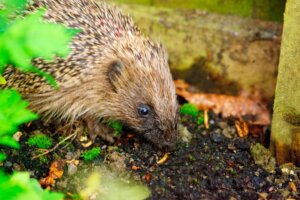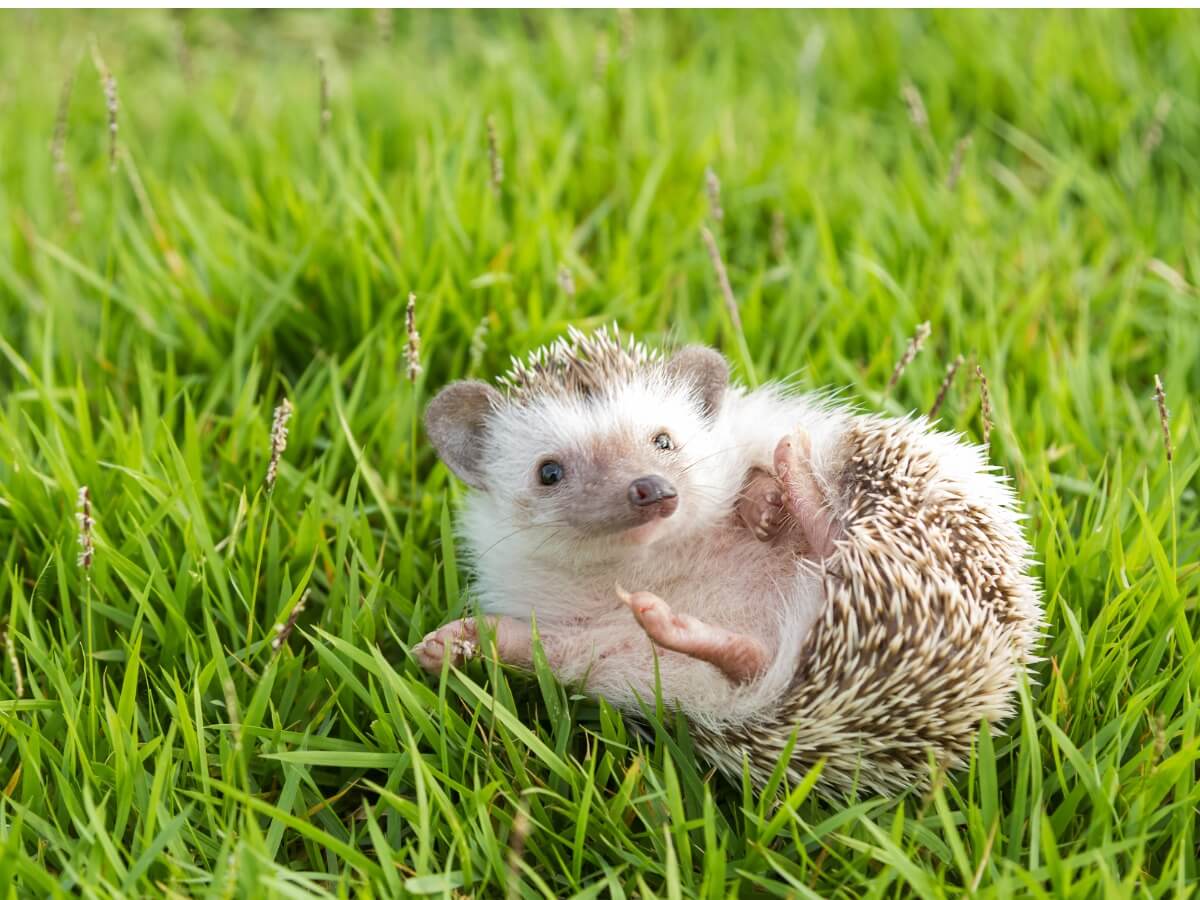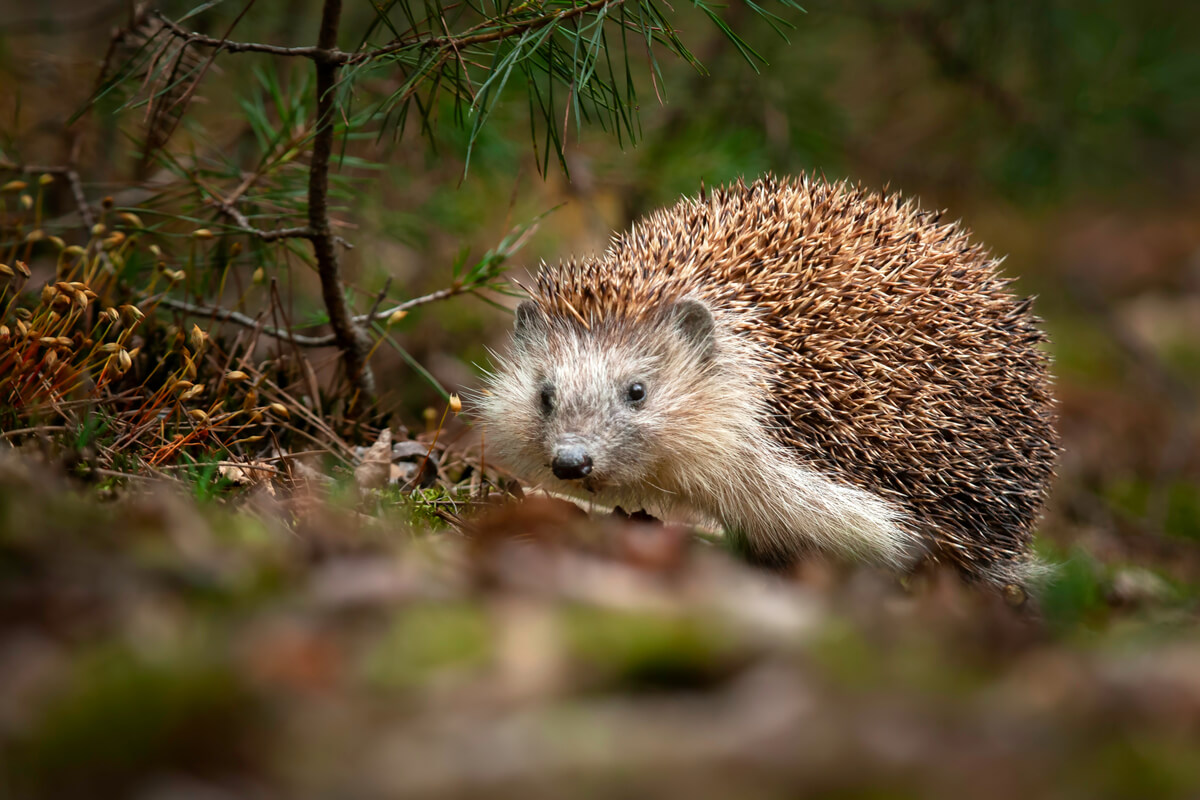What Do Hedgehogs Eat?

Hedgehogs are friendly, beautiful, and very reserved mammals. Their quills and their grumpy personality have won the hearts of many people and, for this reason, more and more specimens of certain species of this group are kept in captivity (especially the African hedgehog, Atelerix albiventris). However, knowing what hedgehogs eat is essential in order to care for them.
Although these animals are cute and small, it should be noted that not all species of hedgehog can be kept in captivity. In fact, some are considered potentially invasive and others are protected by law. If you want to know more about the diet and care of these small mammals, we encourage you to read on.
What are hedgehogs?
Before exploring the dietary choices of hedgehogs, we’d like to describe them from a taxonomic point of view. The term “hedgehog” is used to describe all mammals that are members of the subfamily Erinaceinae (family Erinaceidae). Professional portals estimate that there are only 17 species of these mammals, divided into 5 different genera.
Hedgehogs are easily distinguishable from other mammals, because their hallmark is the spines they carry (made of keratin). Unlike those present in porcupines, these spines aren’t easily released from the mammal’s body. They only fall out in adult hedgehogs when they’re sick or under severe stress.
In general, hedgehogs have a brown or tan coat that’s accompanied by a lighter belly. Their snouts are well developed and pointed, reflecting the fact that they’re adept at tracking and exploring the terrestrial environment. Their ears vary in size, but the Egyptian hedgehog(Hemiechinus auritus) is characterized by having the largest of the group.
There’s only one species of hedgehog that’s kept relatively stable in captivity: Atelerix albiventris. Its possession is legal in some places, but, in countries such as Spain, this mammal is banned because of its invasive status. It should be noted that no specimen endemic to Spain (such as the European hedgehog) can be kept at home under any circumstances.
Very few hedgehog species are legal as pets. In some regions, none are allowed.

What do hedgehogs eat?
The vast majority of hedgehogs live in the wild, but some are beginning to be kept in captivity. Because of this, we’ll be answering the question of what hedgehogs eat depending on the environment they’re in. Don’t miss it!
What do hedgehogs eat in the wild?
As indicated by the site Animal Diversity Web, hedgehogs are omnivorous. However, their diet is much more focused on insects and other invertebrates: snails, crickets, slugs, spiders, beetles, bees, ants, cockroaches, and moths are the basis of their menu.
Apart from invertebrates, hedgehogs also occasionally eat frogs, small snakes, toads, bird eggs, rotting meat, fungi, plant roots, fruits, and seeds. They’re opportunistic and some species (such as A. albiventris) show admirable resistance to toxins, as they can eat poisonous scorpions and snakes without ill effects.
These mammals are eminently nocturnal and have an impressive ability to run (up to 220 yards per hour), swim, and climb surfaces. They spend their nights foraging in nooks and crannies, and they’re generally very active if the ambient temperature allows.
What do hedgehogs eat in captivity?
Feeding a captive hedgehog can be a problem for the owner in the long term. Many regions don’t have specific food for hedgehogs available, so kitten food is often used. The problem is that this food contains too much fat for a mammal of its size, and so the hedgehogs often end up becoming obese.
To this we must add that, ideally, a hedgehog should leave its cage (at least 1 meter – 3.3 feet – long) for about 2-3 hours a day, preferably late in the evening or early morning. As this schedule is not too convenient for many owners, they end up not giving the animal the exercise it requires.
For a hedgehog to be healthy, it’s necessary to provide it with specific food, and let it walk around the house for as long as possible. Here is the diet selected for these mammals by professional veterinary sources:
- The basis of the diet of these animals should be specific feed for hedgehogs. If not available, dietary dry cat food can be used, but this isn’t ideal. Feed containing more than 5% fat should be avoided.
- Live insects should be offered to hedgehogs on a regular basis. Ideally, the animal should eat about 5 live invertebrates a week (crickets, mealworms, or cockroaches). The insects must be well fed and these should always be bought in specialized shops.
- Fresh fruit and vegetables can be offered whenever desired. Many hedgehogs refuse this type of food, but those that accept it will be much healthier.
Every domestic hedgehog must eat live food from time to time. This complicates the proper maintenance of the animal quite a bit, as many owners aren’t willing to keep crickets or cockroaches in their homes to feed the mammal! However, this is necessary for hedgehogs and can’t be ignored.

Hedgehogs and captivity
Keeping a hedgehog in a house or flat is a very complex task. As we’ve said, it has to be fed live prey from time to time, it needs to be exercised for quite a long time in the evening, and it’s very prone to obesity (regardless of the species). In addition, the African hedgehog is regularly affected by a fatal disease.
Due to inbreeding (sometimes illegal), many African hedgehogs develop a neurodegenerative pathology that ends in disaster in all cases: wobbly hedgehog syndrome. Because of their delicate health, their specific requirements, and their legal situation, it’s very difficult to recommend one of these animals as a pet.
All cited sources were thoroughly reviewed by our team to ensure their quality, reliability, currency, and validity. The bibliography of this article was considered reliable and of academic or scientific accuracy.
- History of the hedgehog, hedgehog street. Recogido a 29 de septiembre en https://www.hedgehogstreet.org/about-hedgehogs/hedgehogs-history/#:~:text=Hedgehogs%20are%20small%2C%20spiny%20mammals,East%2C%20Africa%20and%20Central%20Asia.
- Erizo pigmeo africano, MITECO. Recogido a 29 de septiembre en https://www.miteco.gob.es/es/biodiversidad/temas/conservacion-de-especies/hemiechinusaurituswagner1841_tcm30-436546.pdf
- Erinaceus europaeus, Animal Diversity Web (ADW). Recogido a 29 de septiembre en https://animaldiversity.org/accounts/Erinaceus_europaeus/
- What do pet hedgehogs eat? VCA Hospitals. Recogido a 29 de septiembre en https://misanimales.com/informacion-util-sobre-el-erizo-de-tierra/
This text is provided for informational purposes only and does not replace consultation with a professional. If in doubt, consult your specialist.